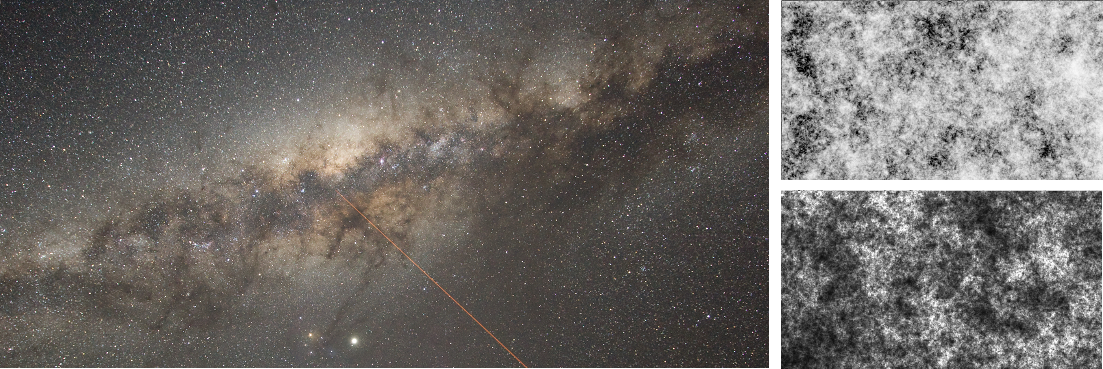

Fabrice NEYRET - Maverick team, LJK, at INRIA-Montbonnot (Grenoble)
One
of the Graals of Computer Graphics is the realistic rendering of
ultra large and detailed scenes, possibly with real-time
walk-through. In
such case we
can’t explicitly render
or even generate
and
store
everything once. Scalability and on-the-fly adaptiveness is thus
required: we need to produce
and process only what is currently visible, and directly at the
relevant resolution.
Virtual
exploration of galaxies (see
some of our previous
work) is
a challenging example of it : we
can’t generate all stars, even if we could we still couldn’t
render all of them in realtime, and when the density is so high that
they appear as a fluid it would be a waste to generate individual
points. Also, we can’t simply sample and place random points in the
Universe: instead, we need to find directly what falls in any given
local region. Moreover, we need need to mix known data (catalog of
starts that are very bright or close to Earth) with stochastic
generation when only the statistics is known.
( Note that the
same problem occurs in other contexts, e.g. tree generation in games
or simulators, where some special landmark trees have to mix with
heterogeneous statistics. )
Uniform probability for coordinates turns into Poisson law when looking for probability of space occupancy (i.e., Poisson distribution). Since this law has fractal properties, and converges towards Normal law, continuum emerging when the variance get weak (i.e., law of large numbers), we want to explore top-down strategies to generate the content needed for a given point of view, either continuous or discreet, and withholding local known data out of stochastic generation. And since modern graphics cards allow massive computations, we want to rely on data structures and algorithms directly running on the GPU (as for our GigaVoxels or Proland projects).
General culture in Computer Graphics and Math.
Being already familiar with probability and statistics will help.
C/C++, OpenGL (programming involved).
Familiarity with GLSL or other GPU-based language (Cuda, etc) will help.